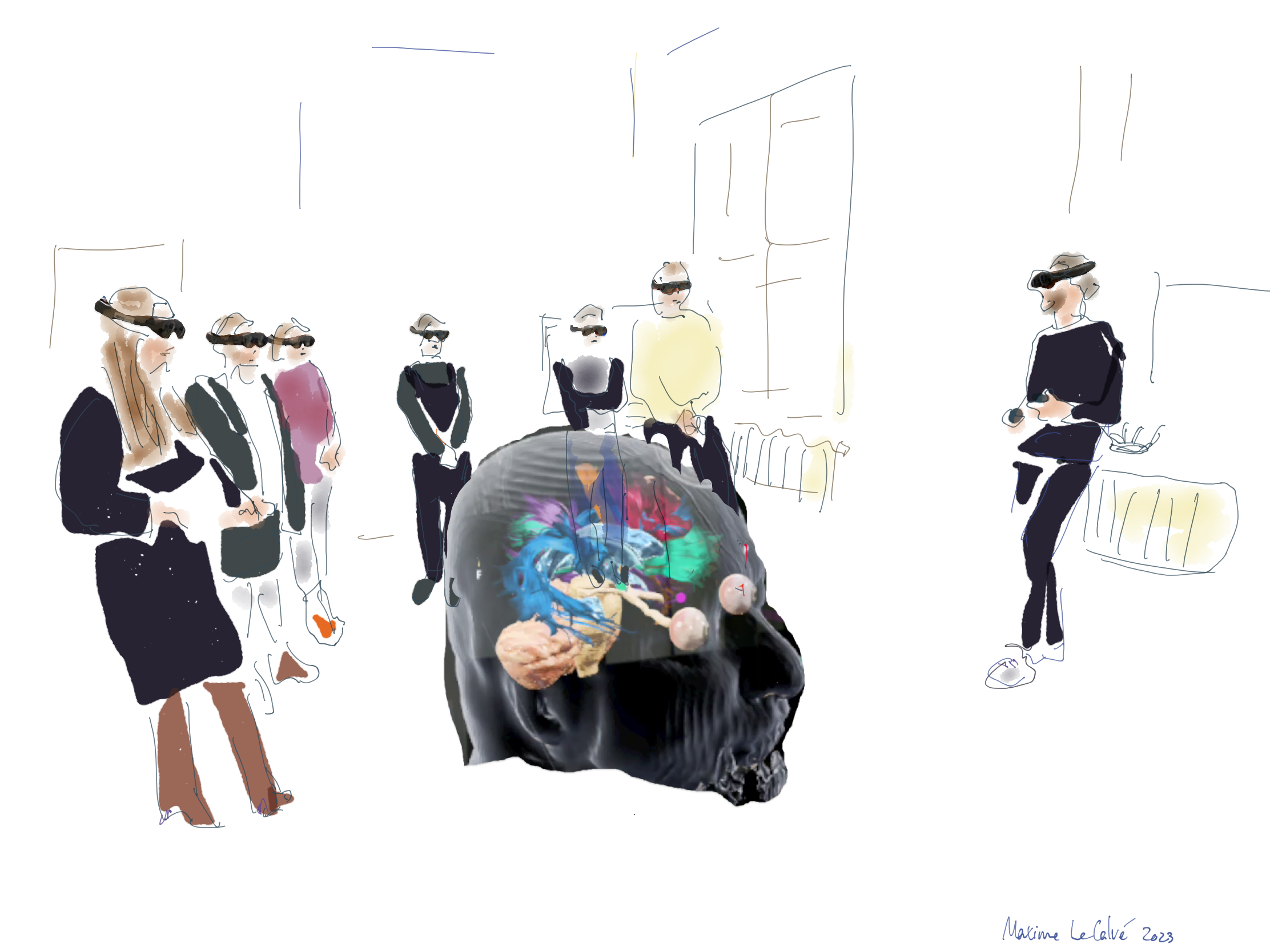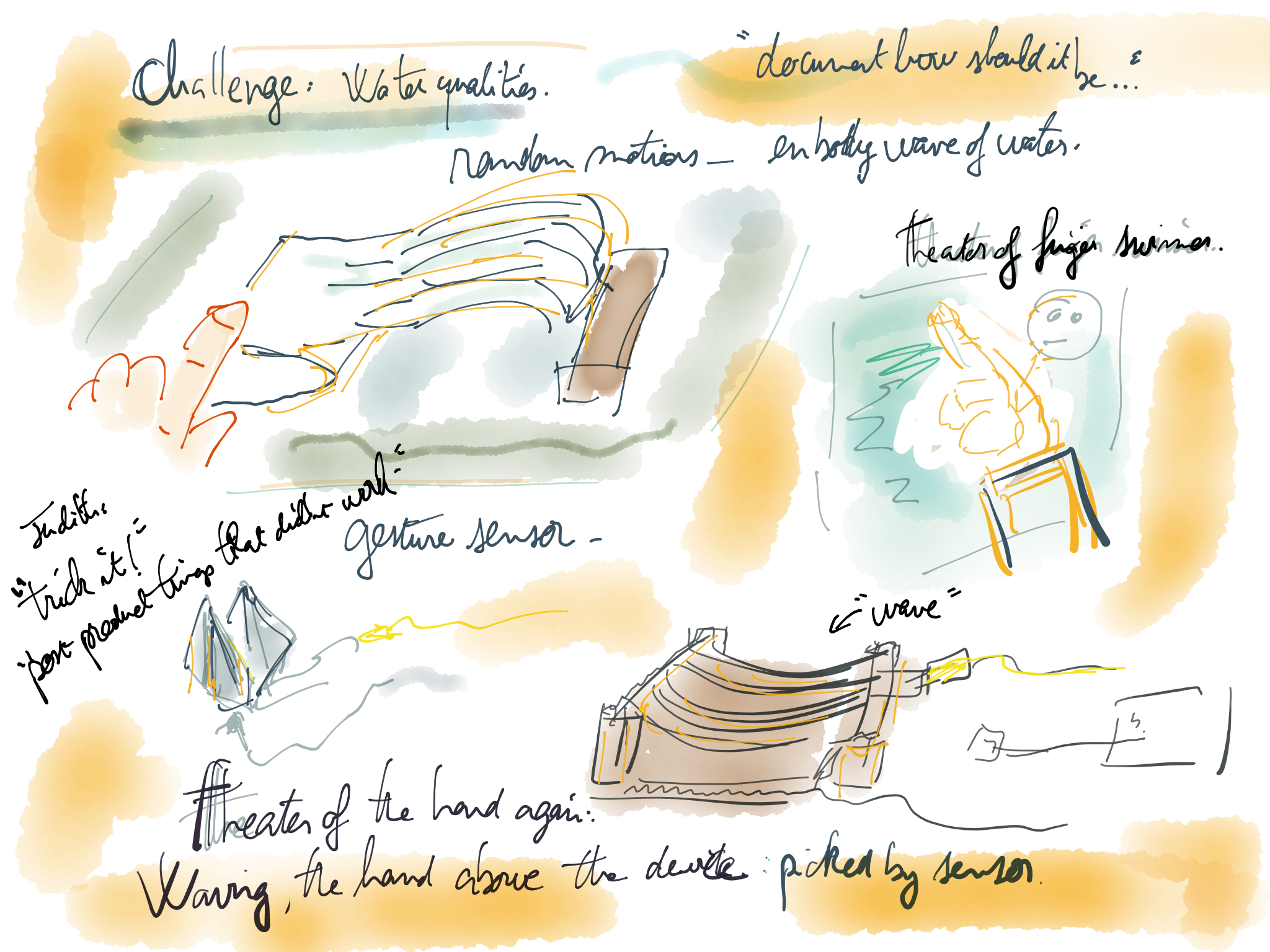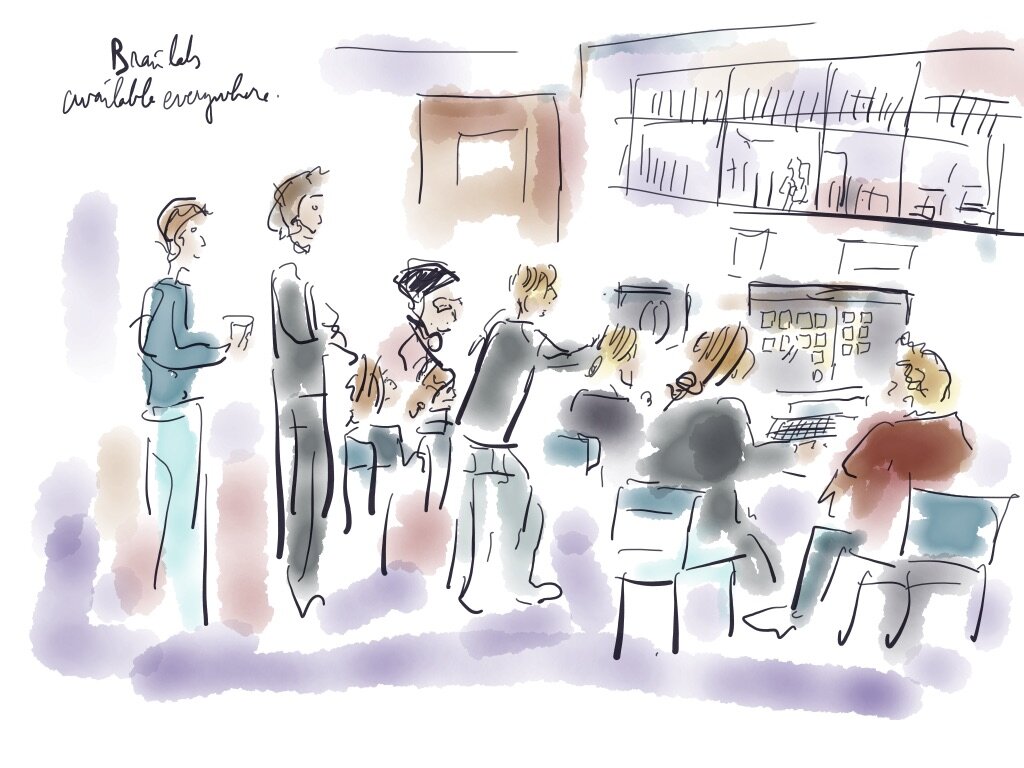At the Digital Neurosurgery seminar led by Prof. Thomas Picht this week and the next, we had the pleasure of hosting a demo by the software editor BrainLab. One of their researchers visited us at the Speculative Realities Lab, bringing along crates of high-tech gear. He presented to the students, and later to the staff, how the mixed reality could play in their Suite. Using Magic Leap AR glasses, a group of seven could explore a brain data set through the Elements neurosurgical planning software suite: a head of a patient with colorful tracks running through the white matter was suddenly floating in space. They multiplied, as students were invited to play around in the room with them. They could manipulate them by poking at them with a virtual laser.
This tool is introduced as a way to plan surgery, yet also as a powerful pedagogic tool for medical students. I could have a look at the questionnaires filled up the next day by the students and they highly appreciated the experience overall, most of them find it a useful addition to the program —an additional modality into the “anatomical intermediality” of medical training (Hallam 2020). The appeal of 3D images is used as a prestigious mark of futurity.
“Students ‘engage in reshaping their experiential world’, learning specialised vocabularies along with ways of seeing and acting that, it is argued, reconstitute persons – whether living patients or dead bodies – as ‘object[s] of medical attention’ ”
In the next room, on the other side of the wall, I was organizing a very rudimentary 3D sketching workshop using the commercially available app Gravity Sketch. The students ended up creating collaboratively a fuzzy scene, with a parrot and a palm tree, and lots of other scribbles.
This was a lot of fun, and curiosity spread as they were exchanging the headset to share what they had created with one another. The students reminisced about the white matter tracts that they had just seen on BrainLab. This same type of eye candy makes the neuroanatomy mixed reality application look so futuristic and appealing. 3D lines become a kind of play dough and the engagement was obviously higher than with the neurosurgical software. We concluded that combining both of these setups, a joyful interaction together with serious neuroanatomical content, could lead us to an even more potent pedagogical experience. During the next session, we explored the visual power in action in the digital image and how they shape medical practices (Burri 2013). We explored the multifarious ambiguities lurking underneath the apparent opposition between the “beauty” of an image and its “objectivity.” The conversation elevated as we went through a strange case: how and why is it that a medical practitioner can call a tumor “beautiful”? It feels like eye candy comes in many brands and many flavors.













